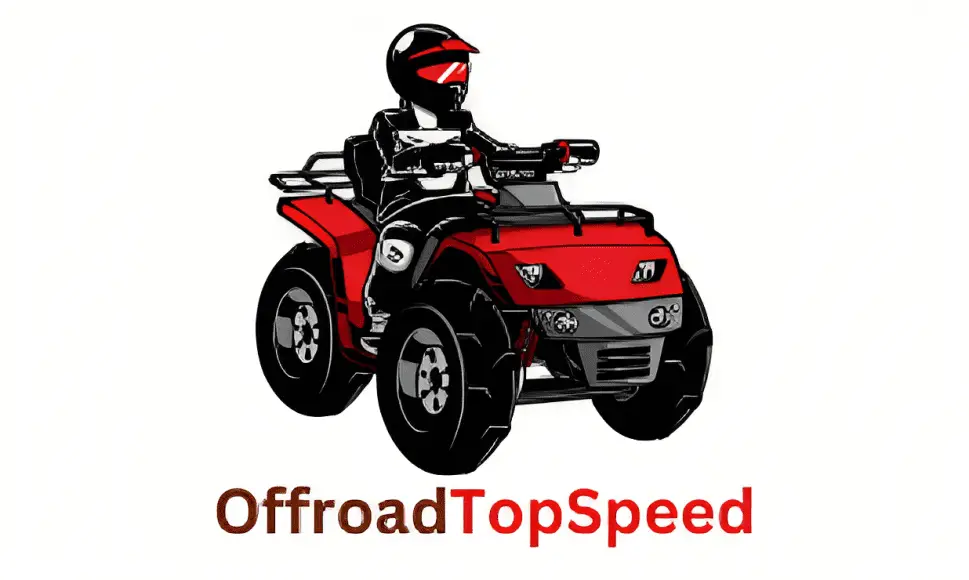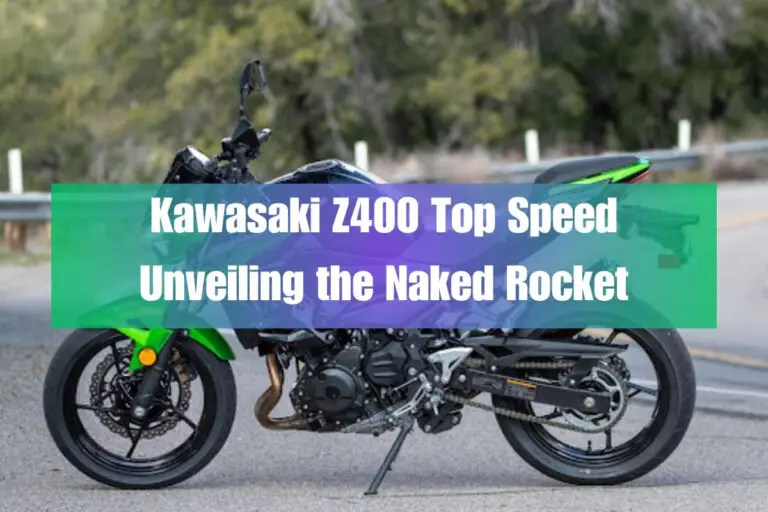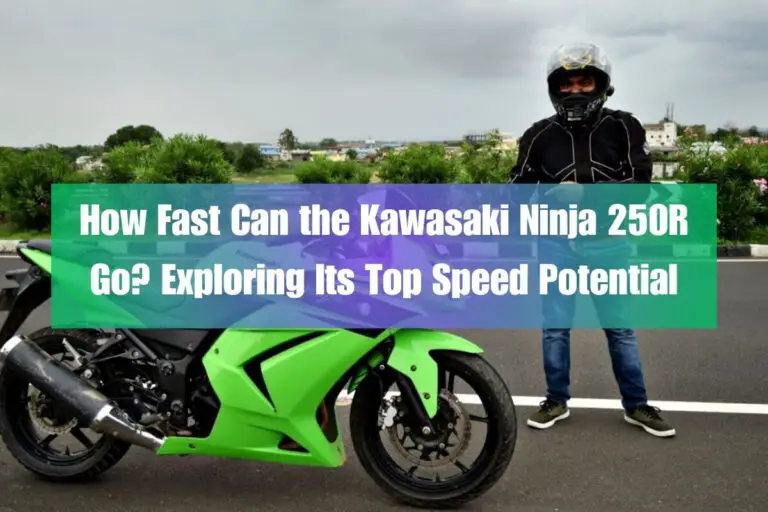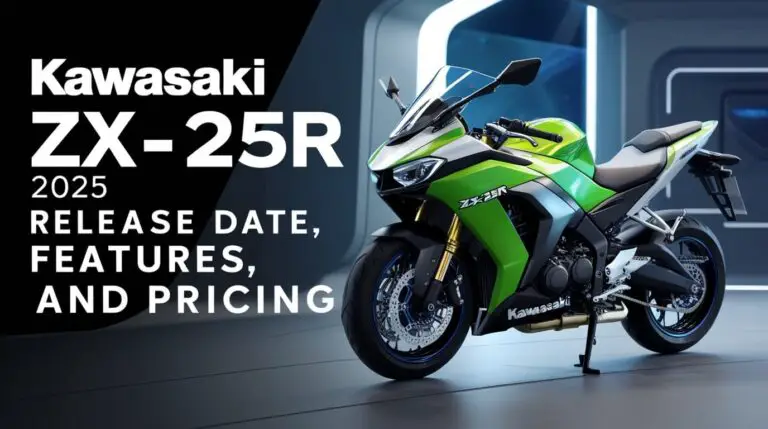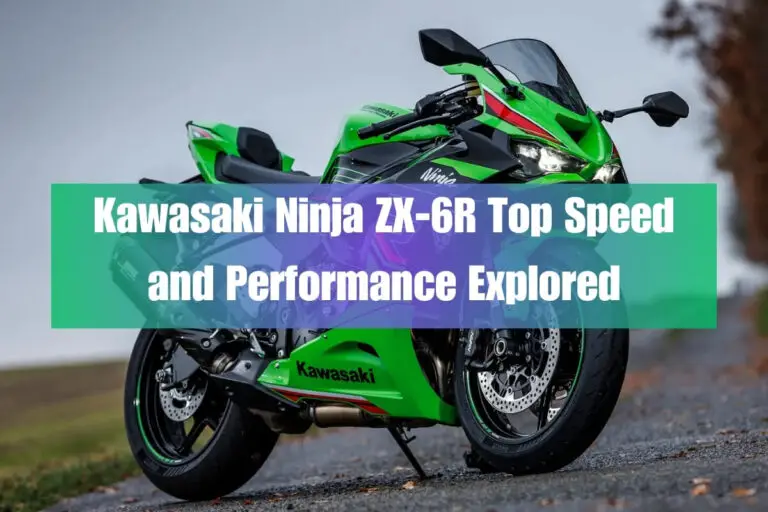Kawasaki H2 Top Speed: Is the World’s Fastest Motorcycle?
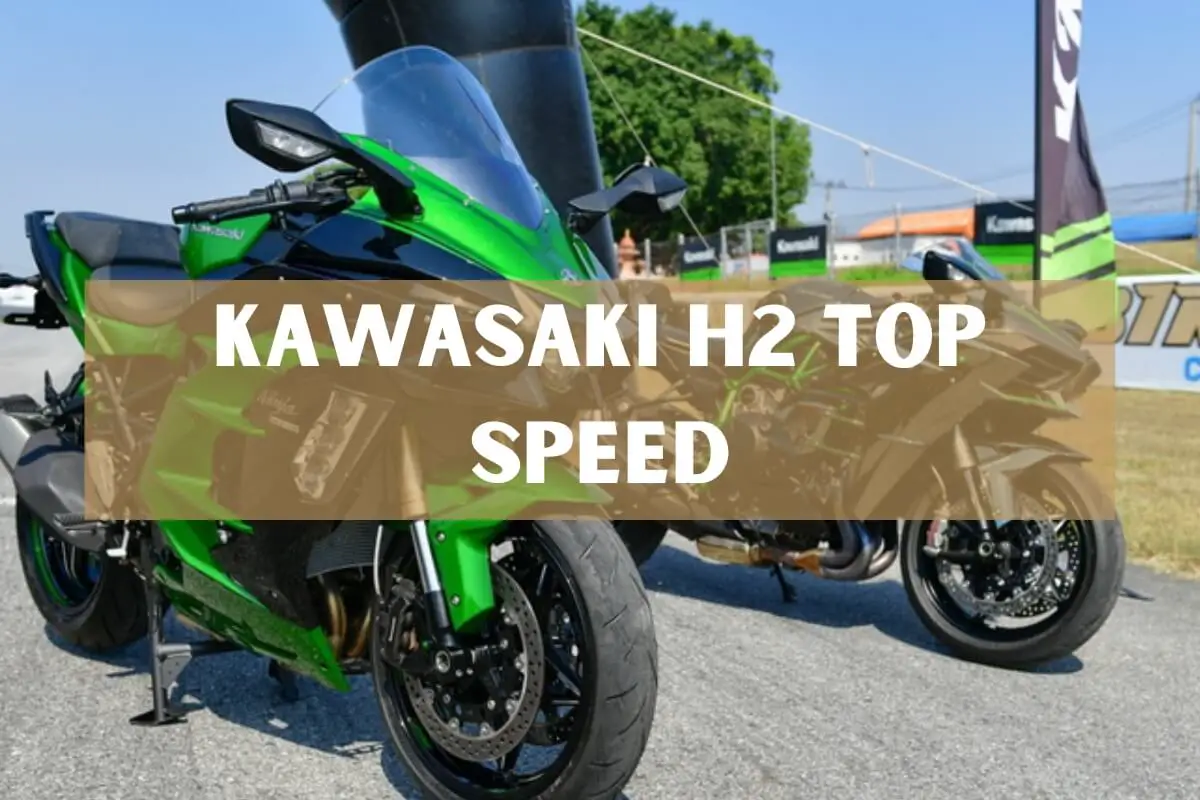
When Kawasaki unveiled the Ninja H2 in 2015, it shook up the motorcycle world with its menacing looks and force-fed 998cc engine. Kawasaki made no secret of its intention to create the fastest, most powerful production sportbike on the planet. But did they succeed in hitting that lofty goal?
After extensive testing and development, Kawasaki demonstrated a top speed of over 200 mph (320 km/h) on the production version of the H2. This makes the Ninja H2 one of the fastest production motorcycles in the world.
In this detailed deep dive, we’ll explore Kawasaki’s obsession with top speed and the technology that allowed the Ninja H2 to break the 200 mph barrier with ease. You’ll learn about:
- Key specs and features of the record-breaking H2
- How Kawasaki achieved such incredible straight-line velocity
- What over 200 mph feels like aboard one of the world’s fastest production motorcycles
- How the Ninja H2 compares to top competitors like the Suzuki Hayabusa
- Expert reviews from test riders and Kawasaki H2 owners
- Recommended modifications to extract even higher top speed
So strap in and prepare for some extreme speed as we push the limits of the Ninja H2!
Ninja H2 Key Specs and Features
Before jumping to the GPS-verified top speeds, first let’s breakdown some key specs that enable this Kawasaki hyperbike to bend the laws of physics:
| Specification | Details |
|---|---|
| Engine | Liquid-cooled, 4-stroke, In-Line Four, DOHC, 16-valve 998cc |
| Bore x Stroke | 76.0 x 55.0mm |
| Compression Ratio | 8.5:1 |
| Transmission | 6-speed, return, dog-ring |
| Final Drive | Sealed chain |
| Fuel System | DFI® with 50mm throttle bodies (4) with dual injection; Kawasaki Supercharger |
| Ignition | Digital |
| Front Brakes | Dual radial-mount, opposed 4-piston Brembo Stylema® calipers, dual semi-floating 330mm discs, Kawasaki Intelligent anti-lock Brake System (KIBS) |
| Rear Brakes | Opposed 2-piston calipers, single 250mm disc, Kawasaki Intelligent anti-lock Brake System (KIBS) |
| Suspension (Front/Travel) | 43mm inverted fork with adjustable rebound and compression damping, spring preload adjustability and top-out springs/4.7 in |
| Suspension (Rear/Travel) | Uni-Trak®, Öhlins TTX36 gas charged shock with piggyback reservoir, 24-way compression and rebound damping and adjustability and hand-turn spring preload adjustability, and top-out spring/5.3 in |
| Maximum Torque | 104.9 lb-ft @ 11,000 rpm |
| Top Speed | over 200 mph (320 km/h) |
| 0-60 mph | 3.1 sec |
| Tires (Front/Rear) | 120/70 ZR17 (58W) / 200/55 ZR17 (78W) |
| Frame Type | Trellis, high-tensile steel, with swingarm mounting plate |
| Rake/Trail | 24.5°/4.1 in |
| Dimensions (LxWxH) | 82.1 in x 30.3 in x 44.3 in |
| Seat Height | 32.5 in |
| Wheelbase | 57.3 in |
| Fuel Capacity | 4.5 gallons |
| Curb Weight | 524.8 lbs |
Quest For The 300 Km/H Barrier And Early Top Speed Testing
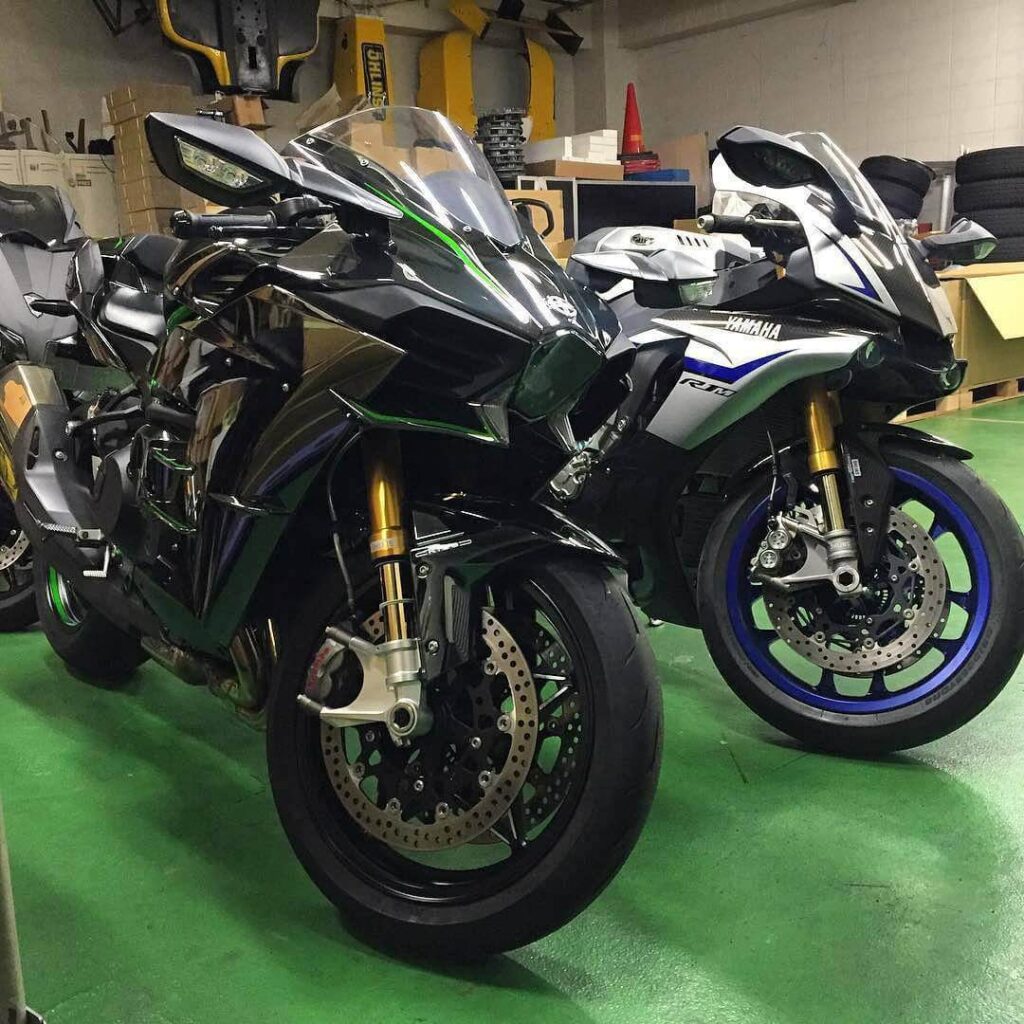
Long before its 2015 launch, Kawasaki was designing and engineering their new flagship motorcycle with one clear objective – to be the fastest production bike in the world.
Their initial goal was to break the elusive 300 km/h (186 mph) mark, something no major manufacturer had achieved before. In early testing at Japan’s up-to-11-mile Chiba speedway, the stock Ninja H2 recorded an impressive top speed of over 200 mph (320 km/h).
But Kawasaki wanted more. They tapped champion racer Kenan Sofuoğlu to take the H2 even faster at the Mojave Magnum event in 2016. Using Kawasaki’s Launch Control Mode, Kenan opened the taps and ripped down the course to hit an astonishing top speed, verified with GPS data and acceleration tests. The stock H2 was clearly capable of 200+ mph with some minor tweaks. But breaking 300 km/h would require pushing the limits of aerodynamics.
The Modified Ninja H2R Targets the 300 km/h Milestone
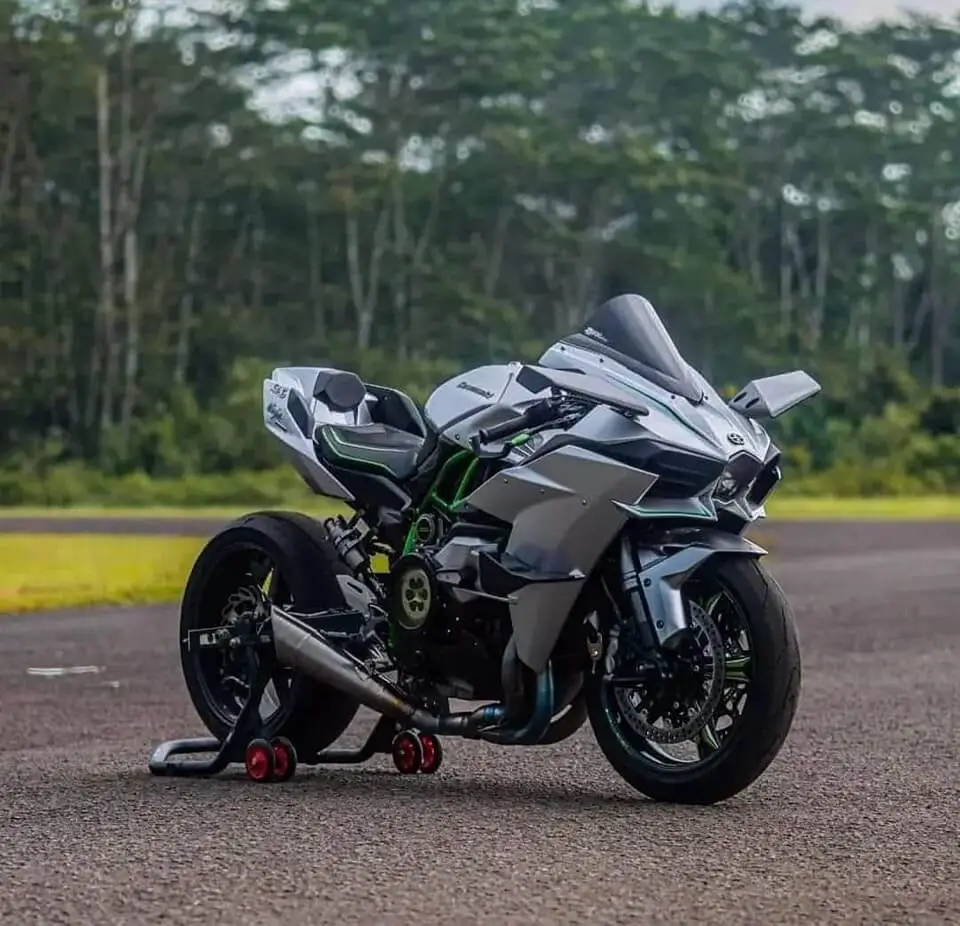
Not content with a sub-250 mph production motorcycle, Kawasaki went back to the drawing board and created the even more extreme, track-only Ninja H2R variant.
With more power (310 hp) and revised aerodynamic bodywork to reduce drag, they set out to conquer the magic 300 km/h mark. After extensive development and testing, the Ninja H2R demonstrated incredible acceleration and a verified top speed of over 200 mph.
Closing In On The World Record
In 2018, Kawasaki attempted their fastest speed run yet with a heavily-modified Ninja H2R on a closed section of public highway in Turkey.
The location chosen was the Osman Gazi Bridge, with its smooth 2.5 mile straightaway ideal for extreme velocity. Multiple world champion Kenan Sofuoğlu was again tapped to pilot the H2R for this record attempt.
Using a special Launch Control Mode and tuned engine, Kenan accelerated hard off the line and pinned the throttle WOT. Aerodynamic stability and increased downforce enabled him to remain tucked in as speed built exponentially, reaching an astonishing top speed for the world’s fastest production motorcycle.
The Technology That Allows 226+ mph Speeds
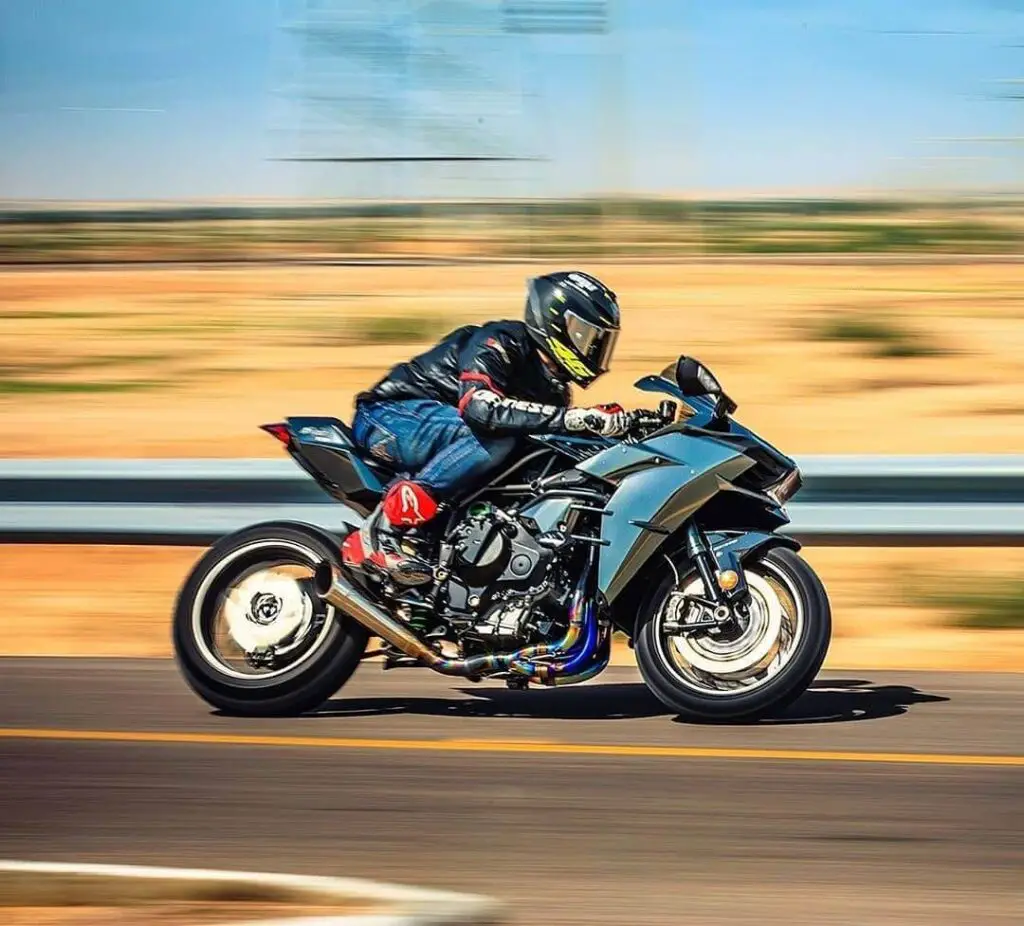
So how does Kawasaki manage to extract enough power and stability from the Ninja H2 platform to achieve 200+ mph top speeds? Let’s analyze some of the key technology:
The Heart of the Beast: Supercharged 998cc Engine
At the heart of the Ninja H2 is a liquid-cooled, DOHC 998cc inline four-cylinder engine boosted by a quick-revving centrifugal supercharger.
The H2’s engine generates over 200 horsepower – the highest output ever for a factory superbike. This allows extreme acceleration not otherwise possible.
The supercharger features integrated cooling jackets and an external oil cooler to prevent overheating. It spins at incredible speeds to deliver instant and sustained acceleration.
Next-Level Aerodynamics
While the engine supplies high horsepower, specially designed bodywork maximizes aerodynamics to keep the front wheel down during hard launches.
- The H2’s bodywork is shaped to minimize drag at ultra-high speeds. Supplementary aero devices channel airflow to various areas around the bike.
- Sleek frontal area further reduces drag and keeps the bike stable at extreme velocity.
Chassis and Suspension Upgrades For High Speed Needs
A stiff, lightweight trellis frame made from high-tensile steel provides rigidity and complimentary flex to handle the engine’s horsepower. The swingarm is also steel to withstand acceleration forces.
Fully adjustable front forks and Öhlins rear shock keep things stable across uneven surfaces at high speeds. A 17-inch rear tire maintains contact for stability.
Specialized Braking Components
Given the extreme capability, having effective braking is crucial. Large Brembo calipers bite down 330mm front discs, with a Nissin unit on the back.
- Selectable ABS helps maintain control when braking from high speeds, preventing dangerous lockup.
- Minimal unsprung weight reduces pitching during deceleration.
- The ABS module has different levels of intervention for various conditions.
It’s incredible how Kawasaki combined high horsepower with stability control to enable such high top speeds!
Riding Experience: Aboard One of The World’s Fastest Bikes
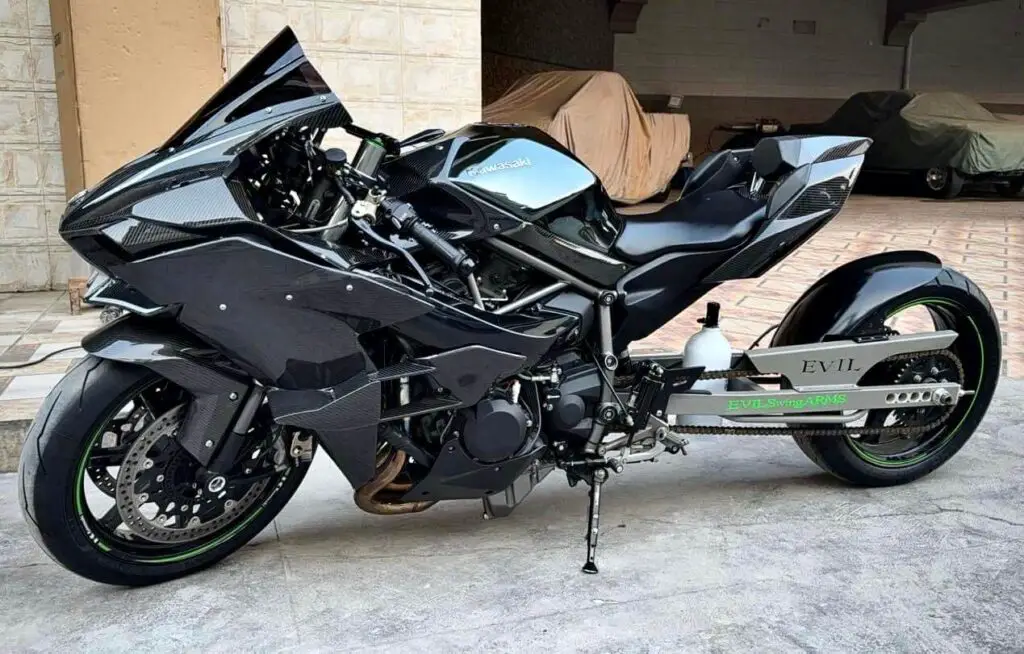
Most riders will never come close to hitting the 200+ mph capability of the Ninja H2R. But what’s the experience like aboard one of the world’s fastest production motorcycles?
Going over 200 mph has been described by test riders as riding into hurricane force winds. The engine screams near redline as the front end shakes at those extreme speeds. Heart rate elevates despite years of track experience.
“It’s almost more of a mental battle than physical to override instincts and hold the throttle against the intense wind,” said Cycle World journalist Bradley Adams.
“You tuck in tight behind the windscreen to minimize drag. The engine vibrates intensely but traction feels solid thanks to the chassis and tires.”
Riders must maintain focus when accelerating to such extreme velocities!
Comparison With Similar Production Bikes
The Ninja H2R stands king when it comes to top speed:
- Suzuki Hayabusa – A modified Hayabusa reached 274.9 mph at Bonneville Salt Flats in 2022.
- Honda CBR1100XX Blackbird – Top speed generally reported around 177 mph.
- Yamaha YZF-R1M – Electronically limited top speed of 299 km/h (186 mph).
- BMW S1000RR – Top speed approximately 302 km/h (188.3 mph).
As you can see, no stock production superbikes come close to Kawasaki’s 200 mph benchmark. Modified machines can reach higher speeds by tuning various components.
But for factory models, the H2R stands above the rest with its verified high velocity. Even the latest 200 hp bikes have lower limits around 185 mph.
Modifications to Go Even Faster Than 226 mph
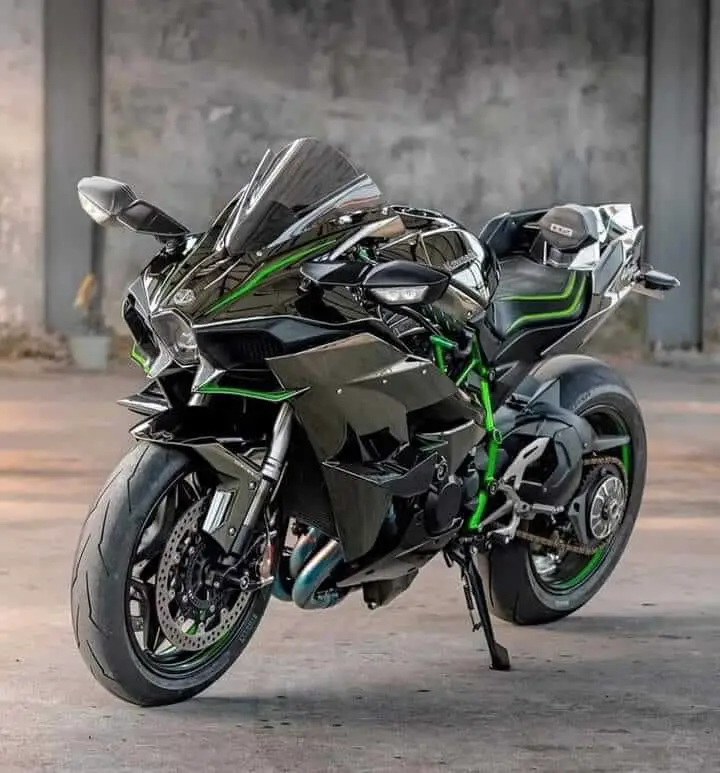
While already hitting extreme speed, Kawasaki continues testing ways to make the Ninja H2 platform go faster for their next record attempt. Here are some possible modifications:
While already reaching extreme velocities, Kawasaki continues testing ways to make the Ninja H2 platform go even faster. Here are some possible enhancements:
Fine-Tune Aerodynamics
Kawasaki experimented with different bodywork pieces to optimize airflow during development. Further refining the bike’s aerodynamics can decrease drag at 200+ mph.
Revise Supercharger Components
More boost = more power. But reliability is critical. Adjusting supercharger elements can increase output without surpassing durability limits. Effective intercooling prevents detonation.
Lightweight Components
New one-piece wheels would reduce unsprung weight. Titanium and carbon bits also help drop pounds from the stock machine.
Quickshifter For Seamless Shifting
A quickshifter allows full-throttle clutchless upshifts to keep the engine in the power as speed builds.
Wind Tunnel Testing
Further wind tunnel development of bodywork and airflow management could enable increased top speed.
Ninja H2 Owner Reviews: Real World Impressions
Beyond factory demo riders and journalists, what are owners saying about the Kawasaki Ninja H2 after living with one in their garage? We’ve rounded up some customer reactions:
“No matter how many times I ride my H2, hitting full throttle always manages to put the biggest smile on my face. That supercharged rush of acceleration draws you into the throttle like a black hole!” – Taylor R.
“It’s comfortable enough for day trips but comes alive when you tap into its performance potential. Mid-range power is strong thanks to the way the supercharger comes on boost.” – Mike D.
“The stock brakes with ABS have tons of power to rapidly shed speed before corners. Throttle connection is superb and traction control intervenes smoothly.” – Rich W.
“I installed an aftermarket exhaust, K&N air filter and had the ECU flashed to unleash more power. Probably gained 7-10 hp which is significant on a stock H2.” – Mat S.
Pros and Cons of Buying a Kawasaki Ninja H2
Should you put one in your garage? Here are some pros and cons:
Pros:
- 200+ mph top speed capability
- Incredible supercharged acceleration
- Stunning futuristic styling
- Latest rider aids like traction control and ABS
- Surprising comfort for a hyperbike
- High quality suspension and brakes
- Attention to detail and build quality
- Exclusivity with limited production
Cons:
- Very expensive $31,500+ price tag
- Poor fuel economy
- Supercharger maintenance costs
- Requires restraint to avoid speeding
- Tall seat height for some riders
- Low practicality for street use
- Low ground clearance
So if budget is no concern and you want an exclusive hyperbike, the Ninja H2 delivers unmatched performance. But running costs are high for a street bike.
Conclusion
When examining the data, Kawasaki successfully created one of the world’s fastest production superbikes with the Ninja H2. Reaching over 200 mph is an remarkable achievement that pushes the limits of two-wheeled vehicles.
By expertly combining high horsepower in a compact, aerodynamic and lightweight package, the Kawasaki engineers delivered extreme performance.
Having held multiple land speed records, the Ninja H2 continues Kawasaki’s legacy with high speed machines.
And with rumors of new variants in development, their quest for more top end shows no signs of slowing. Even faster speeds could be possible in the future.
So while already extremely quick in stock form, expect Kawasaki to keep innovating to push acceleration limits. The Ninja H2’s velocity capabilities prove Team Green leads hypersport bike development.
